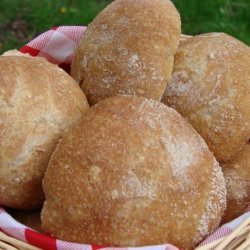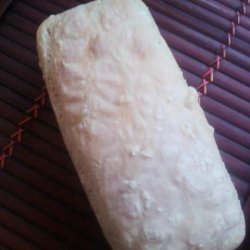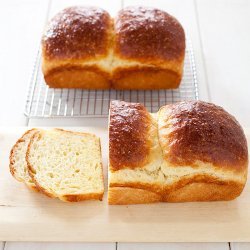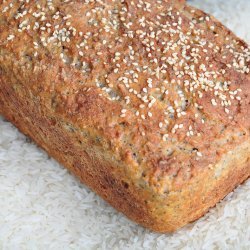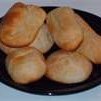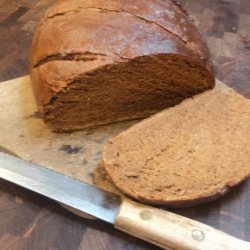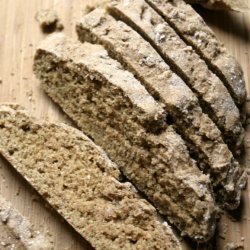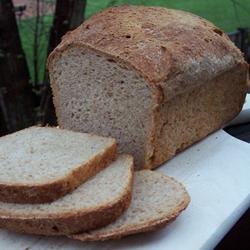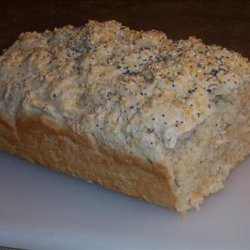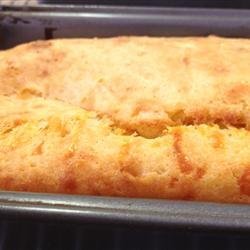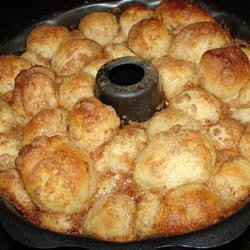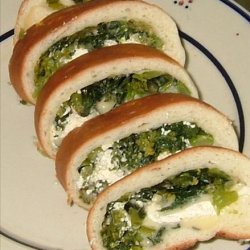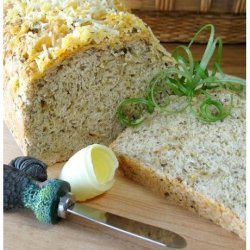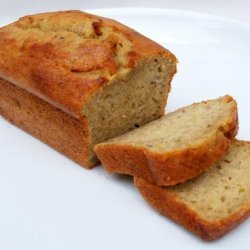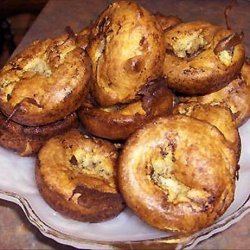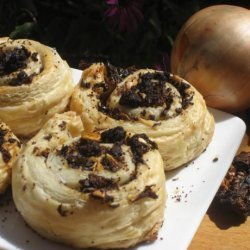Ingredients:
- 3 1/4 cups lukewarm water
- 1/2 tsp cornstarch , blended with a small amount of water (using a fork add 1/2 cup water, and micro 30-60 sec until boil)
Directions:
- In a 5 or 6 quart bowl or lidded food storage container, dump in the water and add the yeast, salt and malt powder. Because we are mixing in the flour so quickly it doesn’t matter that the salt and yeast are thrown in together. If you are using the fresh cake yeast break it up.
- Dump in the flour along with the wheat flakes all at once and stir with a long handled wooden spoon or a Danish dough whisk, which is one of the tools that makes the job so much easier!
- Stir it until all of the wheat is incorporated into the dough. It will be a wet rough dough.
- Put the lid on the container, but do not snap it shut. You want the gases from the yeast to escape. (You could put a little hole in the top of the lids so that you could close the lids and still allow the gases to get out.). Allow the dough to sit at room temperature for about 2 hours to rise. When you first mix the dough it will not occupy much of the container. But, after the initial 2 hour rise it will pretty much fill it. (If you have decreased the yeast you will have to let it go longer than 2 hours.) DO NOT PUNCH DOWN THE DOUGH! Just let it settle by itself.
- The dough will be flat on the top and some of the bubbles may even appear to be popping. (If you intend to refrigerate the dough after this stage it can be placed in the refrigerator even if the dough is not perfectly flat. The yeast will continue to work even in the refrigerator.) The dough can be used right after the initial 2 hour rise, but it is much easier to handle when it is chilled. It is intended for refrigeration and use over the next week and a half, ready for you anytime. The flavor will deepen over that time, developing sourdough characteristics.
- The next day when you pull the dough out of the refrigerator you will notice that it has collapsed and this is totally normal for this type of dough. It will never rise up again in the container.
- Dust the surface of the dough with a little flour, just enough to prevent it from sticking to your hands when you reach in to pull a piece out.
- You should notice that the dough has a lot of stretch once it has rested. (If your dough breaks off instead of stretching your dough is probably too dry and you can just add a few tablespoons of water and let it sit again until the dough absorbs the additional water.).
- At this point, you can divide the dough into 4 one pound balls and freeze them in airtight containers for up to three weeks. Allow 24 hours in refrigerator to thaw before use. You can also leave the dough in its container in the refrigerator for up to 10 days, cutting off pieces as needed.
- When ready to bake, cut off a 1-pound piece of dough using kitchen shears and hold in your hands. Add a little more flour so it will not stick to your hands. Gently stretch the surface of the dough around to the bottom on all four sides, rotating the ball a quarter turn as you go. Most of the dusting flour will fall off; it's not intended to be incorporated into the dough. The correctly shaped final product will be smooth and cohesive.
- Rest the loaf on a generous layer of corn meal on top of a pizza peel. Let the dough rest for at least 40 minutes, (although letting it go 60 or even 90 minutes will give you a more open hole structure in the interior of the loaf. This may also improve the look of your loaf and prevent it from splitting on the bottom. ) You will notice that the loaf does not rise much during this rest, in fact it may just spread sideways, this is normal for this type of dough.
- Twenty minutes before baking, preheat the oven to 400 degrees F with a baking stone on the center rack, with a metal broiler tray on the bottom (never use a glass vessel for this or it will shatter), which will be used to produce steam. (The tray needs to be at least 4 or 5 inches away from your stone to prevent it from cracking.).
- Dust the top of the loaf with more flour so the knife will not stick. Cut the loaf with a cross or a tic-tac-toe pattern using a serrated knife. If your slashes are too shallow you will end up with an oddly shaped loaf and also prevent it from splitting on the bottom.
- Slide the loaf into the oven onto the preheated stone and add a cup of hot water to the broiler tray. Quickly close the oven door. Bake the bread for 35 minutes or until a deep brown color. To insure that you get the best results it is crucial to have an Oven Thermometer to make sure your oven is accurate.
- Allow the loaf to cool on a rack until it is room temperature. If you cut into a loaf before it is cooled you will have a tough crust and a gummy interior. It is hard to wait, but you will be happy you did! Make sure you have a nice sharp Bread Knife that will not crush the bread as you cut. Or you can tear it apart as they do in most of Europe.
- If you have any leftover bread just let it sit, uncovered on the cutting board or counter with the cut side down. If you cover a bread that has a crust it will get soggy.
Nutrition Facts
| Amount Per 1 Serving | |||
| Calories | 655.6 Kcal (2745 kJ) | ||
| Calories from fat | 31.39 Kcal | ||
| % Daily Value* | |||
| Total Fat | 3.49g | 5% | |
|---|---|---|---|
| Cholesterol | 2.37mg | 1% | |
| Sodium | 590.04mg | 25% | |
| Potassium | 408.13mg | 9% | |
| Total Carbs | 137.35g | 46% | |
| Sugars | 11.89g | 48% | |
| Dietary Fiber | 7.37g | 29% | |
| Protein | 18.33g | 37% | |
| Vitamin C | 0.3mg | 0% | |
| Iron | 7mg | 39% | |
| Calcium | 70.1mg | 7% | |
| Amount Per 100 g | |||
| Calories | 297.85 Kcal (1247 kJ) | ||
| Calories from fat | 14.26 Kcal | ||
| % Daily Value* | |||
| Total Fat | 1.58g | 5% | |
|---|---|---|---|
| Cholesterol | 1.07mg | 1% | |
| Sodium | 268.06mg | 25% | |
| Potassium | 185.42mg | 9% | |
| Total Carbs | 62.4g | 46% | |
| Sugars | 5.4g | 48% | |
| Dietary Fiber | 3.35g | 29% | |
| Protein | 8.33g | 37% | |
| Vitamin C | 0.1mg | 0% | |
| Iron | 3.2mg | 39% | |
| Calcium | 31.9mg | 7% | |
* Percent Daily Values are based on a 2000 calorie diet. Your daily values may be higher or lower depending on your calorie needs.
Find out how many calories should you eat.
Get Your Recipe of Health!
Follow RecipeOfHealth on Facebook!


